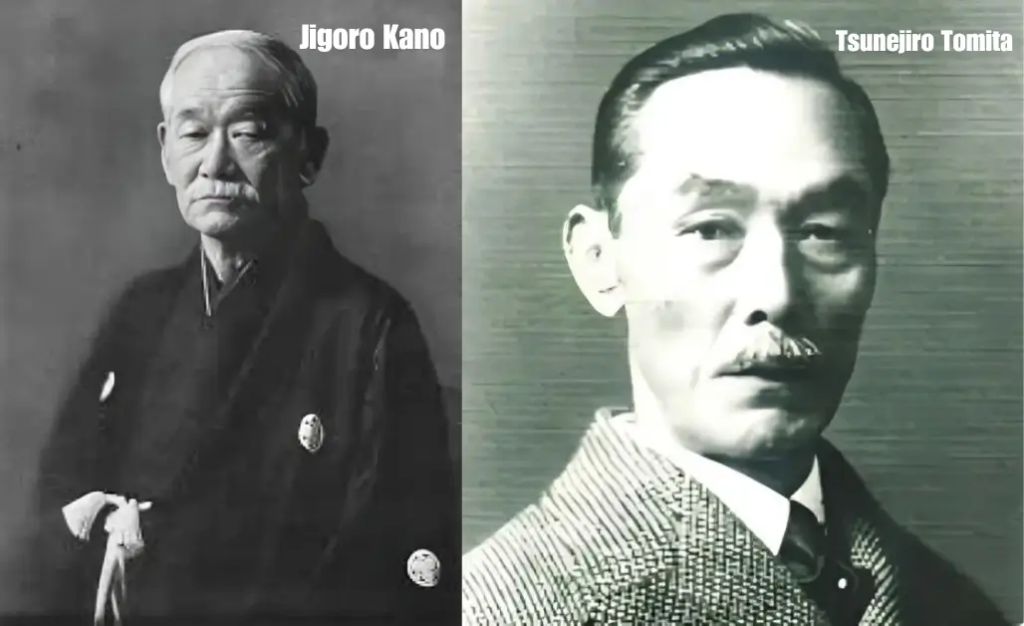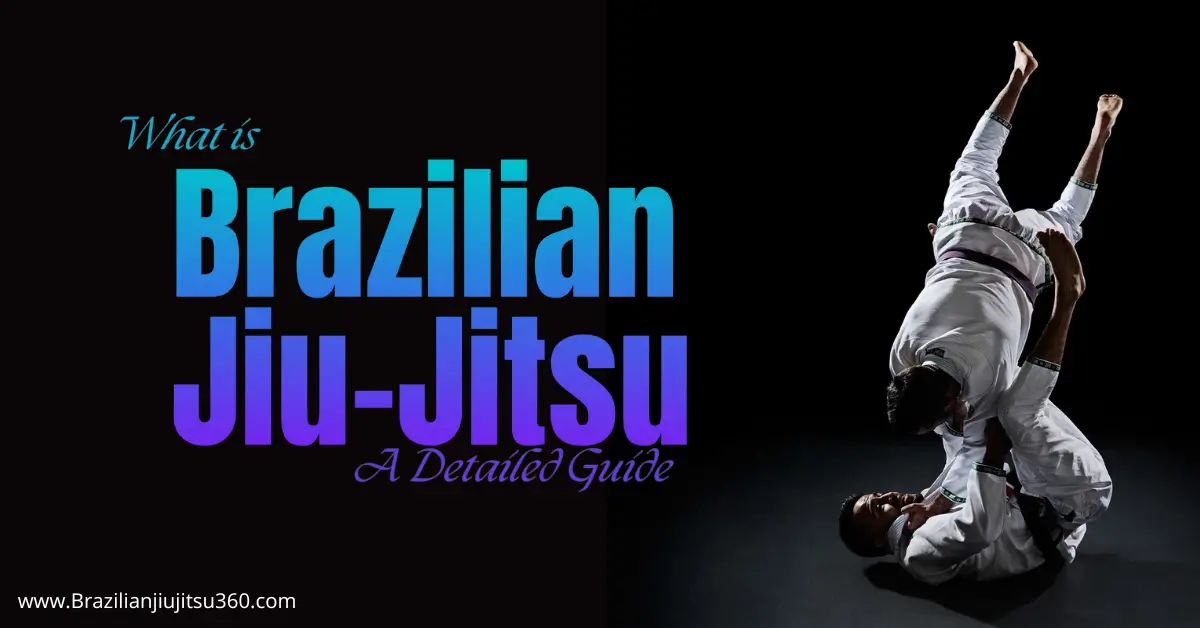What is BJJ? A Detailed Guideline
Bjj stands for “Brazilian jiu-jitsu” which is a one type of martial arts and combat sport used for self-defense based on grappling and ground fighting.
The term “Jiu-Jitsu” is of Japanese origin (also spelled “Jujutsu” or “Jujitsu”). Jū (柔) means “gentle, soft, or flexible, and Jutsu (術) means “art, technique, or method. Combined, “Jiu-Jitsu” (柔術) translates to “gentle art” or “gentle technique.”
This shows that Jiu-Jitsu focuses on using the opponent’s own force against them. Instead of using a lot of strength, it relies on using the right techniques, leverage, and timing.
Unlike some other martial arts that focus on punches or kicks, BJJ focuses on Submission holds such as chokeholds and joint locks techniques for taking an opponent down to the mat and controlling them there. This makes it a great option for smaller or weaker people who want to learn self-defense.
Master Helio Gracie (BJJ Founder) Said: Always think and imagine that your competitor is going to be stronger, bigger, and 10X faster than you. This way, you will work harder, focus on technique, avoid shortcuts, and give proper time to training, so you can defeat your opponent
1. Where did BJJ Originate:
A. Mitsuyo Maeda and the Birth of BJJ
Brazilian Jiu-Jitsu originated from Japanese Jiu-Jitsu and Judo in Japan and appeared for the first time in Brazil because of Mitsuyo Maeda a Japanese Judo expert, born in Japan (1878-1941) and one of the Kodokan (headquarters of the worldwide judo community) top groundwork experts. He was a student of Tomita Tsunejirō, who was the first student of Jigoro Kano. If you want to go more back and learn more about Jigoro Kano’s teacher and the exact origins of Jiu-Jitsu, check out our article on the History of Jiu-Jitsu.

Maeda left Japan and visited many countries of Europe with a group to fight the boxers, wrestlers, and other martial arts to popular jiu-jitsu, on 14 November 1914 he visited Brazil and lived with Gastao Gracie in the city of Belém do Pará, and it was from here that Japanese jiu-jitsu spread to Brazilian Jiu-Jitsu.
B. How the Gracie Family Helped Create BJJ:
Gastao Gracie has 8 children: 5 sons and 3 daughters. He selected his biggest son, Carlos Gracie to learn jiu-jitsu from a Japanese master.
Maeda started teaching Carlos, and after years of learning Jiu-Jitsu, Carlos created the first jiu-jitsu school in Brazil in 1925 and began teaching it to his four brothers. All five brothers improved the existing techniques and created new ones, converting Jiu-Jitsu into its own martial art.
All five brothers created techniques and tested them in the fight ring. Techniques that didn’t work were removed, while those techniques that worked were added to Brazilian Jiu-Jitsu. This is how BJJ was improved.
It’s important to remember that the most important roles in BJJ were played by the older and smaller brothers, Carlos and Helio Gracie.
Then they passed their knowledge to the 2nd, 3rd, and even 4th generations. If you want to learn more about their generations then check our article about the Gracie Family Tree with pictures as shown in the table below:

From these generations, many fighters created BJJ academies in countries such as the US, Canada, and various European countries. Some members also competed in different championships.
The Boom of the BJJ was that time when one of the Gracie family members Royce Gracie fought in UFC-1 in 1993. He defeated larger and more powerful opponents using BJJ techniques. He also fought in UFC 2 and UFC 4 and won all these fights, this was the time when BJJ was popularized all around the world.
2. What is the Benefits of BJJ?
Brazilian Jiu-Jitsu (BJJ) has many benefits. It’s not just a sport or martial art for self-defense, it’s important for everyone, from children to seniors, to learn and practice it.
Here are the top 10 benefits of Brazilian Jiu-Jitsu:
- Learn Self-Defense for Street Fights.
- Easy Weight Loss.
- Improving Mental Focus and Problem-Solving with BJJ.
- Make New and Valuable Friends in the BJJ Community.
- Increases Your Heart Rate & Stamina (Better Cardio).
- Better Sleep.
- Improves Flexibility and Movement.
- Technique Over Strength: Fewer Chances of Injury.
- Boosts Self-Confidence.
- Having Fun.

If you want to know more about these benefits, check out our article, Top 10 Benefits of BJJ where we explain all these advantages in detail and how they can be beneficial for you.
3. What is the BJJ Belt Ranking System?
In the early BJJ belt systems (1900s), there were 3 belts:
- White Belt – For beginners.
- Light Blue Belt – For intermediate-level practitioners.
- Dark Blue (or Navy) Belt – For advanced students.
In 1967, more belts were introduced by the Jiu-Jitsu Federation of Guanabara to better differentiate skill levels. After that, the system expanded to 5 belts:
- White Belt: Beginner
- Blue Belt: Intermediate
- Purple Belt: Advanced
- Brown Belt: Near-expert
- Black Belt: Expert (with additional degrees of mastery)
In modern times (1980 to present), there are 8 BJJ belt ranks: White, Blue, Purple, Brown, Black, Red-and-Black, Red-and-White, and the final Red Belt.
Here’s a table to help you understand the modern ranking system. For more details, check out our article: BJJ Ranking System

i. How Long Does it Take to Get a Black Belt in BJJ?
The average time to earn a black belt in BJJ is approximately 8 to 12 years. However, if you work hard and train consistently 5-6 times a week, participate in different BJJ tournaments, help new students, and put in extra effort, you might be able to reduce this time to around 5.5 years or even less. On the other hand, the maximum time can extend to 16 years or more.
If you want to learn more about the journey to a BJJ black belt and tips on how to achieve it faster, check out our article by clicking on How Long Does it Take to Get a Black Belt in BJJ?
ii. How Many BJJ Kids Belts are there?
Children aged 4 to 15 years have 13 different BJJ belts. When kids start in BJJ, they receive a white belt, just like adults. After that, there are four groups of belts: Grey, Yellow, Orange, and Green, and each group has 3 belts. So, the total is 12 belts, plus 1 white belt, making a total of 13 belts for BJJ kids. Here is a table for better understanding:
| Belt Color | Belt Color | Age | Minimum Time |
|---|---|---|---|
| White | – | Any | Beginner |
| Grey | Grey White | 4-15 | 8 Months |
| Grey | 5-15 | 8 Months | |
| Grey Black | 6-15 | 8 Months | |
| Yellow | Yellow White | 7-15 | 8 Months |
| Yellow | 8-15 | 8 Months | |
| Yellow Black | 9-15 | 8 Months | |
| Orange | Orange White | 10-15 | 8 Months |
| Orange | 11-15 | 8 Months | |
| Orange Black | 12-15 | 8 Months | |
| Green | Green White | 13-15 | 8 Months |
| Green | 14-15 | 8 Months | |
| Green Black | 15-15 | 8 Months |
For more details, we have written a complete article about the BJJ kids ranking system. If you want to learn more, click on BJJ Kids Belts Explained (Complete Guide).
4. How is BJJ different from other martial arts?
BJJ is different from other martial arts because it focuses more on technique than strength. Unlike martial arts like kickboxing, Muay Thai, Krav Maga, or Karate, which focus on punching and kicking, BJJ focuses on submission holds such as chokeholds and joint locks to take an opponent down and control them on the ground.
A person who knows BJJ can easily defeat a physically stronger opponent, which is why it’s often considered a mental sport. This is what makes it different from other martial arts.
5. What are the Different Types of Jiu-Jitsu?
There are more than 32 types of Jiu-Jitsu. Out of these, 12 are the most popular, 13 are less popular, and 8 are not actual types of Jiu-Jitsu but include some Jiu-Jitsu techniques. You could say they are part of Jiu-Jitsu because they include those techniques. Below is a quick overview:

12 Most Popular Types of Jiu-Jitsu:
1. Japanese Jiu-Jitsu
2. Brazilian Jiu-Jitsu (BJJ):
There are the further more than 4 types of BJJ:
- Gracie Jiu-Jitsu:
- Machado Jiu-Jitsu:
- Luiz França Jiu Jitsu
- Gi Jiu Jitsu and No-Gi Jiu Jitsu
If you want to learn more about these four types, you can find a detailed explanation in this section of the article by clicking here.
3. 10th Planet Jiu-Jitsu
4. Combat Jiu-Jitsu (CJJ)
5. American Jiu-Jitsu (AJJ)
6. Hokutoryu Ju-Jutsu
7. Luta Livre Esportiva
8. German Ju-Jutsu
9. Small Circle JuJitsu
10. Atemi Jujitsu
11. Kenpo Jiu Jitsu
12. Budoshin Ju-Jitsu
13 Less Popular Types Of Jiu-Jitsu:
13. Fusen-ryu Jujutsu
14. Daito-ryu Aikijujutsu
15. Hakko-ryu Jujutsu
16. Hontai Yoshin-ryu Jujutsu
17. Kukishin-ryu
18. Takagi-ryu Jujutsu
19. Takenouchi-ryu Jujutsu
20. Sosuishi-ryu Jujutsu
21. Kito-ryu Jujutsu
22. Tenjin Shinyo-ryu Jujutsu
23. Gyakutedo
24. Yagyu Shingan ryu
25. Daiwado Jujutsu
7 Other Jiu-Jitsu Related Martial Arts:
26. Aikido
27. Judo
28. Sambo
29. Bartitsu
30. Wadō-ryū Karate
31. Vale Tudo
32. Triangle choke
If you want to know more about these 33 types then check our article: Types of Jiu-Jitsu.
FAQs
How Many Members Are in Gracie’s Generations?
There are a total of four Gracie family generations. In the first generation, there are eight members. In the second generation, there are 34 members, but only 16 are well-known for helping BJJ grow. The third generation has 18 members, and the fourth generation has four members who are publicly known and available on the internet.
So in total, the four generations include 64 members. For more details, please visit the Gracie Family Tree article.








10 Comments